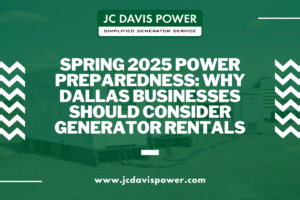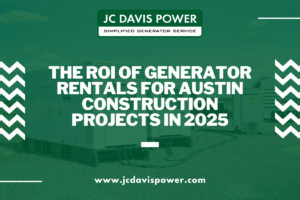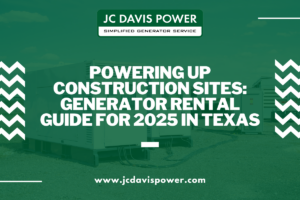Key Takeaways
- Data center power infrastructure includes important components like PDUs, UPS systems, and transfer switches.
- Redundancy architectures, such as N+1 and 2N configurations, help keep power flowing without interruptions.
- Preventive actions and response plans are key to preventing and handling power failures.
- Generator systems need careful planning and regular upkeep.
- Business continuity and disaster recovery plans are crucial for dealing with power emergencies.
- Sustainable power solutions balance reliability with being environmentally friendly.
- Future-proofing means using new technologies and planning for growth.
Understanding Data Center Power Infrastructure
The foundation of a modern data center is its power infrastructure. This system makes sure that important operations run smoothly, data stays accessible, and businesses remain online. Let’s explore the main components of this vital network.
Core Components of Power Systems
- Power Distribution Units (PDUs): These devices send power to server racks and other equipment. They manage the flow of electricity and often allow for monitoring.
- Uninterruptible Power Supply (UPS) Systems: UPS systems act as a backup when power fluctuates. They provide immediate power during outages, ensuring a smooth switch to generator power if needed.
- Transfer Switches: These switches automatically change the power source from the main supply to backup systems when necessary. They are crucial for keeping operations running during power cuts.
Together, these components create a strong power delivery system. It’s not just about having the right tools; it’s about how they work together to keep everything running smoothly.
Power Reliability Standards and Compliance
Data centers must follow strict industry regulations and meet specific reliability standards. Here’s a quick look at what that involves:
| Standard | Description | Importance |
|---|---|---|
| Uptime Institute Tiers | Classifies data centers by redundancy and uptime | Sets expectations for reliability |
| ISO/IEC 27001 | Standard for information security management | Ensures data protection practices |
| NFPA 70 | National Electrical Code | Establishes safety standards for electrical systems |
Compliance isn’t just about following rules. It’s essential to ensure that data centers can provide the reliability that businesses need. Performance metrics like Power Usage Effectiveness (PUE) help operators measure and improve efficiency.
Critical Power Redundancy and Backup Systems
When it comes to data center power, being prepared is essential. This is where redundancy and backup systems come into play.
Redundancy Architecture
Redundancy means having extra equipment to ensure continuous operation. Here are some common setups:
- N+1 Configuration: This setup includes one extra unit beyond what is needed for normal operation. If one unit fails, the system continues to run at full capacity.
- 2N Systems: These systems double everything, providing two completely independent power paths.
- Concurrent Maintainability: This design allows for maintenance on any system component without disrupting operations.
Each of these architectures has its place, depending on the data center’s needs and importance.
Emergency Power Solutions
Even with the best redundancy, emergencies can happen. That’s when these solutions come in:
- Backup Generators: These provide long-term power during extended outages.
- Temporary Power Units: Mobile solutions that can be quickly set up in emergencies.
- Mobile Power Systems: Truck-mounted generators that can be moved to where they are needed most.
These emergency power options ensure that data centers can keep running even in the worst-case scenarios.
Power Failure Prevention and Mitigation
It’s often said that an ounce of prevention is worth a pound of cure—especially with data center power.
Preventive Measures
Staying ahead of power issues is crucial. Here’s how data centers do it:
- Monitoring Systems: Real-time tracking of power usage and system health.
- Load Management: Balancing power distribution to prevent overloads.
- Regular Maintenance: Scheduled check-ups and repairs to catch problems early.
- Early Warning Systems: Alerts that notify about potential issues before they escalate.
These proactive steps help ensure stability and prevent small issues from turning into major crises.
Response Protocols
When prevention isn’t enough, having a backup plan is essential:
- Emergency Procedures: Step-by-step guides for different power-related scenarios.
- Failover Systems: Automatic switching to backup power sources.
- Recovery Steps: Detailed processes for returning to normal operations after an incident.
Well-practiced response protocols can mean the difference between a minor setback and a major failure.
Generator Systems and Management
Generators are the heavy lifters of emergency power. They need to be ready to work at a moment’s notice.
Generator Capacity Planning
Choosing the right generator is not just about picking the biggest one available. It requires careful planning:
- Load Calculations: Determining how much power the data center needs.
- Growth Considerations: Planning for future expansion and increased power demands.
- Fuel Requirements: Ensuring there is enough fuel stored for extended outages.
A generator that is too small won’t meet demand, while one that is too large wastes resources. It’s all about finding the right balance.
Maintenance and Testing
A generator is only as good as how well it is maintained:
- Scheduled Maintenance: Regular check-ups to keep the system in great shape.
- Load Bank Testing: Simulating full-load conditions to ensure the generator can handle peak demand.
- Performance Monitoring: Ongoing tracking of generator health and efficiency.
Regular testing and maintenance ensure that when the power goes out, the generators will be ready.
Business Continuity and Disaster Recovery
Power issues don’t just affect machines—they can stop entire businesses. That’s why planning for emergencies is essential.
Power Contingency Planning
A solid contingency plan includes:
- Risk Assessment: Identifying potential power-related threats.
- Recovery Strategies: Developing plans to address different scenarios.
- Emergency Resources: Securing necessary equipment and personnel for crisis response.
These plans should align with overall business continuity goals, ensuring that power issues don’t disrupt critical operations.
Disaster Response Preparation
When disaster strikes, every second counts. Preparation includes:
- Emergency Contacts: A clear chain of command and communication.
- Resource Allocation: Knowing what resources are available and how to use them.
- Recovery Timelines: Setting realistic goals for restoring normal operations.
With proper preparation, data centers can handle severe power disruptions with minimal impact on their clients.
Environmental and Efficiency Considerations
Today, being reliable isn’t enough—data centers must also be environmentally responsible.
Sustainable Power Solutions
Balancing reliability with sustainability involves:
- Energy Efficiency: Using power-saving technologies and best practices.
- Environmental Impact: Reducing carbon footprint through smart design and operations.
- Green Technologies: Using renewable energy sources whenever possible.
These efforts not only lower environmental impact but can also lead to cost savings.
Cost Optimization
Efficiency is good for both the environment and the budget:
- Energy Management: Using tools to monitor and control power usage.
- Resource Utilization: Making the most of available power and cooling resources.
- Operational Efficiency: Streamlining processes to reduce waste and improve performance.
By optimizing costs without sacrificing reliability, data centers can provide better value to their customers.
Future-Proofing Power Infrastructure
Technology is always changing. Data centers must look ahead to stay effective and reliable.
Emerging Technologies
The future of data center power is exciting:
- Smart Grid Integration: Connecting with intelligent power distribution networks.
- AI-Powered Management: Using artificial intelligence to optimize power usage in real-time.
- Advanced Monitoring Systems: Using next-gen sensors and analytics for predictive maintenance.
These technologies promise to make data centers more efficient, reliable, and adaptable.
Scalability Planning
Growth is inevitable, and power systems must keep up:
- Capacity Evolution: Planning for increased power demands as technology develops.
- Infrastructure Upgrades: Designing systems that can be expanded or upgraded without major disruptions.
- Future Requirements: Anticipating changes in regulations and technology that may affect power needs.
By planning for the future, data centers can ensure they remain competitive and capable.
Conclusion
Reliable power is crucial for data centers. From redundant systems to advanced management tools, every part of power infrastructure plays a vital role in keeping our digital world functioning. It’s not just about keeping the lights on—it’s about efficiency, sustainability, and preparing for a changing future.
Understanding these power principles is essential for businesses that depend on data centers to make smart decisions. Whether you run your data center or choose a provider, prioritizing reliable power is essential.
Ready to ensure your data center operations are set for success? Visit JC Davis Power for expert solutions and services tailored to your power needs.
FAQs on Reliable Power in Data Centers:
- What are the primary consequences of power failures in data centers?
Power failures can lead to downtime, data loss, hardware damage, and financial losses due to interrupted services. - How do UPS systems contribute to data center reliability?
UPS systems provide immediate backup during outages or fluctuations, ensuring seamless transitions to secondary power sources like generators. - What redundancy measures are typically implemented for power systems?
Common setups include N+1 configurations (one extra unit), 2N architectures (dual independent paths), and concurrent maintainability designs. - What is the average cost impact of data center downtime?
The cost varies but averages around $9,000 per minute globally due to lost revenue and operational disruptions. - How do modern data centers monitor power quality?
They use advanced monitoring tools that track voltage stability, load distribution, and system health in real time. - What role do backup generators play in maintaining reliable power?
Backup generators provide long-term emergency power during extended outages when primary sources fail. - What are the industry standards for power reliability in data centers?
Standards include Uptime Institute Tiers (I-IV), ISO/IEC 27001 for security management, and NFPA 70 for electrical safety compliance. - How does power reliability affect Service Level Agreements (SLAs)?
High reliability ensures SLA commitments are met by minimizing downtime and maintaining consistent service delivery. - What emerging technologies are improving power reliability?
Innovations like AI-powered energy management systems and smart grid integration enhance efficiency and predictive maintenance capabilities. - How do different tier levels of data centers handle power requirements?
Higher-tier facilities (Tier III & IV) offer greater redundancy and uptime guarantees compared to lower-tier ones (Tier I & II). - What preventive maintenance measures ensure power reliability?
Regular inspections, load testing of equipment like generators/UPS units, and real-time monitoring prevent unexpected failures. - How does power efficiency relate to reliability in data centers?
Efficient energy use reduces strain on infrastructure while ensuring consistent performance under varying loads or conditions.





